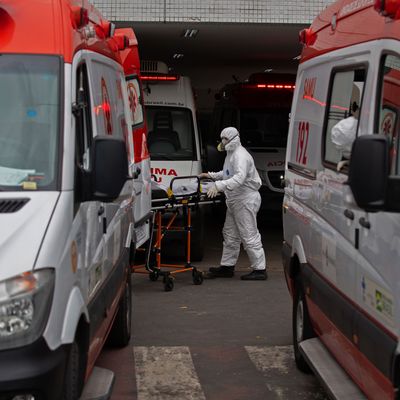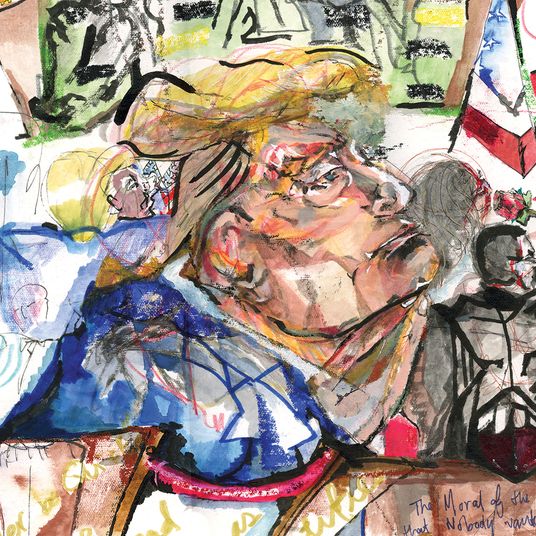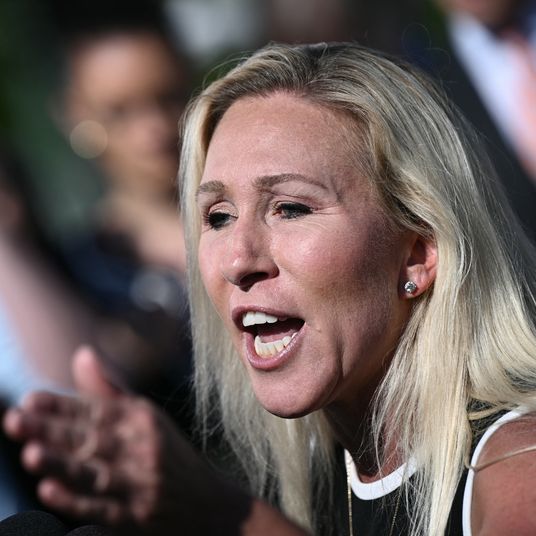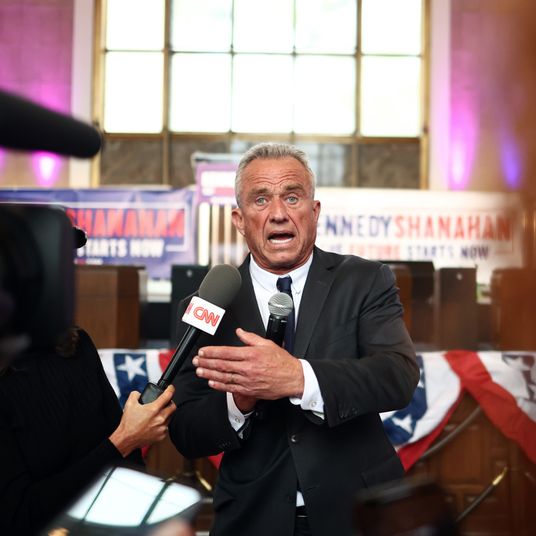
Earlier this month, researchers announced that a troubling new strain of the coronavirus had been detected in the Amazon city of Manaus, Brazil, amid a horrifying surge of new COVID-19 cases in the area. The onslaught of infections has led to the collapse of the local health-care system for the second time during the pandemic. The city was hit brutally hard by the first wave last spring, and some experts believed it had reached a level of herd immunity by the fall. Scientists are now trying to determine what role the newly discovered P.1 coronavirus variant — which has at least two key mutations that may make the strain more transmissible and better able to reinfect COVID survivors as well as render vaccines less effective — may have played in the new wave. Meanwhile the new strain has already been detected among travelers from Brazil in two countries, including the United States.
Below is everything we know about the P.1 variant and why scientists around the world are concerned about it.
Where and when did the P.1 variant emerge?
The P.1 variant was first detected in samples from Manaus in the Amazonas state in northern Brazil in mid-December. The researchers who discovered it published their findings on January 12, noting that they detected the strain in 42 percent of the samples they tested and that it had also been detected in a few recent coronavirus cases in Japan among people who had traveled to Manaus. It is not clear precisely when the variant evolved, but the researchers noted that it had not been present in the publicly available genome-surveillance samples that were collected in Manaus between March to November.
The reason the researchers started sequencing samples from Manaus was because they wanted to investigate why there had been a startling resurgence of the coronavirus in the city, where a study has estimated as much as 76 percent of the population had already been infected with COVID-19, which would theoretically infer a high level of immunity among its inhabitants.
The researchers discovered that the P.1 strain “contains a unique constellation of lineage defining mutations” that could be “potentially associated with an increase in transmissibility or propensity for reinfection of individuals.” More on the what that means below.
What makes scientists worry about a new coronavirus strain?
Since viruses are constantly evolving, new genetic variants with various mutations appear all the time. The ones infectious-disease experts end up worrying about are those that have developed mutations that make them more dominant and/or dangerous by becoming more transmissible (easier to spread/catch), more virulent (causing a more severe illness), or better able to avoid antibodies generated by previous infection, vaccines, or treatments.
Since June, the dominant variant of SARS-CoV-2, the virus that causes COVID-19, throughout the world has been D614G, which was somehow able to beat out its genetic predecessors. Recently, more evolved variants have begun to take over in parts of the world, most notably the B.1.1.7 strain, which emerged in the U.K. and is believed to be much more infectious than D614G — to the point that the CDC has warned it will be the dominant variant in the U.S. by March.
What makes the P.1 variant so worrisome?
The P.1 variant (also known as B.1.1.248) concerns scientists for a few reasons, starting with how it has two notable mutations that may make it more dangerous.
First, it has a spike protein mutation that may make the variant more infectious. This mutation, known as N501Y (or “Nelly”), is also present in the B.1.1.7 variant, which is fast overtaking the U.K., as well as the B.1.351 (also known as 501.V2, or N501Y.V2) variant that has emerged in South Africa. The mutation enables the virus’s spike proteins to more easily bind with human cells, which may make it more infectious. Research has suggested that the B.1.1.7 variant may be more than 50 percent more transmissible than previously dominant strains — which is why scientists and public-health officials are so worried about it.
The P.1 variant also has an “escape mutation” known as E484K, which also exists in the B.1.351 variant from South Africa and which in lab experiments has been found to help the coronavirus evade protective antibodies generated by earlier infections, as well as less susceptible to antibody drugs. In other words, it’s possible that someone who has already been infected with an earlier strain of the coronavirus could be reinfected by a variant with this mutation and that the mutation may enable the coronavirus to evade antibodies generated by COVID vaccines.
To be clear, this does not mean that the currently available coronavirus vaccines will not work against variants with the E485K mutation. Moderna and Pfizer-BioNTech, the makers of the two vaccines currently authorized for use in the U.S. have found that in lab tests, their mRNA vaccines were only slightly less effective against the B.1.135 variant from South Africa, and the companies are already working to update the vaccines to address the issue. Elsewhere, many coronavirus experts expect that the vaccines will offer comparable protection against these new strains with the E484K mutation. More research is needed, but for now it seems like the worst-case real-world scenario would be that the vaccines would still prevent serious illness from the variants but might be less effective at preventing a mild or asymptomatic infection from them.
And again, the vaccines can and will be updated to account for this and other mutations over time.
P.1 and the B.1.351 variant also share another mutation, K417, but less is understood about how that benefits the virus.
When variants of concern evolve with the same advantageous mutation(s) in separate geographically distinct locations at the same time, it suggests those mutations are significant evolutionary leaps for the virus. But it also remains unclear whether or not these mutations and their effects are tied to other mutations in the variants in ways scientists don’t yet understand.
As Science’s Kai Kupferschmidt recently pointed out, it could be that a mutation like N501Y, the one linked to higher transmissibility, is only helpful to the coronavirus when it occurs in combination with one or more other mutations. More research is needed, and is under way, to investigate the various mutations at work in each of the new suddenly dominant strains. Notes Sarah Zhang at The Atlantic:
It’s still early, and data on the variant in Brazil are particularly sparse. In addition to sharing certain mutations, though, these variants simply have a large number of mutations, some unique to each variant. Gaining a whole suite of mutations quickly should be a very uncommon event. But with the virus so widespread right now, very uncommon events will happen — and will happen more than once. The usual two-per-month mutation rate may undersell how the coronavirus can mutate in unusual situations. “It’s a little bit of a wake-up call,” Kristian Andersen, a microbiologist at Scripps Research, told me.
Will existing vaccines be effective against the P.1 variant?
Yes, they absolutely should be. While vaccines have not yet been tested against the P.1 variant, both Moderna and Pfizer-BioNTech have reported that their mRNA vaccines provide protection against the other two major variants of concern. On January 25, the companies confirmed that in their initial testing, there was no meaningful difference in how effective their vaccines were against the B.1.1.7 variant which originated in the U.K. — and that the vaccines were only slightly less effective against the B.1.135 variant which originated in South Africa. The B.1.135 variant has the E485K mutation that the P.1 variant has, which scientists theorize makes the strain better able to evade neutralizing antibodies from previous coronavirus infections and vaccines.
Moderna also says it is working to develop a booster shot to address the B.1.135 variant from South Africa, but only as a precaution. They are also researching whether a third shot of the current formula of their vaccine will have the same booster effect against the new variant. Here was what Moderna’s chief medical officer, Dr. Tal Zaks had to say about the P.1 variant on January 25, per the New York Times:
Dr. Zaks said that the new version of the Moderna vaccine, aimed at the South African variant, could be used if needed as a booster one year after people received the original vaccine. …
“We don’t yet have data on the Brazilian variant,” Dr. Zaks said. “Our expectation is that if anything it should be close to the South African one. That’s the one with the most overlap.” New forms of the virus will continue to emerge, he said, “and we’ll continue to evaluate them.”
Both Moderna and Pfizer-BioNTech said they could develop adjusted vaccines to provide equal protection against the new variants in a matter of weeks.
As STAT News’ Andrew Joseph recently explained, while the mutations present in these new variants of concern indicate evolution of the coronavirus in ways that could eventually make vaccines less effective, that probably won’t happen for a long time, or without recourse:
Scientists do think the coronavirus could eventually change so much that the immunity provided by vaccines will be threatened, a process that will pick up as the number of people protected from the virus — either through vaccination or infection — grows and evolutionary pressure in turn increases. But they still anticipate it could take years, and that when it does occur, vaccine makers can tweak their designs to match the newer variant, a process some companies have said would only take weeks.
What is happening with the pandemic in Brazil and Manaus?
For a variety of reasons — including startling incompetence and neglect from the country’s far-right leader, President Jair Bolsonaro, and his administration — the coronavirus pandemic has been especially devastating for Brazil. More than 211,000 people have been killed by COVID-19 there as of January 19, the highest reported death toll outside the U.S. Brazil’s more than 8.5 million reported cases ranks third globally, behind the U.S. and India. Many experts believe both of those numbers are significant undercounts. And no part of Brazil has been hit harder by the pandemic than its largest state, Amazonas, and the state’s capital and largest city, Manaus, where the P.1 variant recently emerged.
The sprawling riverside metropolis of 2.2 million in the heart of the Amazon experienced one of the worst outbreaks in the world during the first wave. By the time the wave peaked in May, the local public-health-care system had collapsed and gravediggers could not keep up with the bodies. Even according to the undercounted death toll, its per capita deaths were dramatically higher than anywhere else in the country.
Starting in December, another horrifying wave of the coronavirus struck the city and Amazonas. By the end of the second week of January, Manaus’s public-health system was once again collapsing, with a critical shortage of oxygen forcing the evacuation of premature babies out of the city and emergency airlifts of oxygen in. One health-care worker told The Guardian that each day that week set a new record for burials. The first round of vaccinations has finally begun in the city, but the crisis there, which has prompted nationwide protests, isn’t likely to end anytime soon.
How are the Manaus surge and the P.1 variant connected? Are people being reinfected?
One recent study published in Science estimated that as many as 76 percent of the city’s residents had already been infected with the coronavirus by October, prior to the current wave, and some scientists believed Manaus had reached herd immunity. The Science study may have been flawed, but either way, any city hit as hard as Manaus in the first wave should have a lot of residents with some level of immunity. Yet the city has once again experienced an explosion of COVID cases.
Though there has only been, as of yet, one confirmed case of someone being reinfected with the coronavirus in Manaus, many experts fear there may be many more. Coupled with the emergence of the P.1 variant with mutations that may make it both more infectious and better equipped to evade antibodies from previous infections, there is understandably much concern that the variant has been reinfecting people on a large scale because of those unique mutations. The variant, however, is not the only possible explanation.
Since COVID is still so new in the world, researchers still don’t know exactly how long immunity from previous infections lasts. It’s thus possible that Manaus residents’ immunity has waned and that’s why people may be getting reinfected. It’s also could be that P.1 isn’t reinfecting people but is so infectious that it has increased the threshold for herd immunity, rendering whatever level Manaus had suddenly insufficient. And it’s possible that residents of the city’s population never had as much immunity as some scientists have estimated and that Manaus is a terrifying two-time case study for what happens when authorities fail to respond to a pandemic.
So can people who have already had COVID-19 be reinfected by the P.1 variant or not?
That still needs to be determined. So far, there was only been one confirmed case of that happening in Manaus, and cases of reinfection from any variant remain very rare. But there is much scientists still don’t know about the P.1 variant, including its ability to reinfect COVID survivors.
Where else has the P.1 variant been detected?
So far, only a handful of cases of the P.1 COVID variant have been detected in countries outside of Brazil, almost all among people who had recently traveled the Brazil. Four cases have been detected in Japan, as well as single cases in South Korea, the Faroe Islands in the North Atlantic, Germany, Peru, and the U.S. On January 25, the Minnesota Department of Health announced that the P.1 variant had been detected in a Twin Cities resident who had recently traveled to Brazil.
There is no evidence to-date of community transmission of the variant in any country other than Brazil.
It is possible, if not likely, that P.1 has already spread elsewhere outside Brazil undetected. All of the strains of the coronavirus that have become dominant somewhere in the world like P.1 has in Amazonas have ultimately spread to other countries.
Though the variant has not been detected in the U.K., one of the country’s leading epidemiologists recently said that he would be surprised if it wasn’t already there.
What about the P.2 variant, which also emerged in Brazil?
Another variant of the coronavirus, named P.2, has reportedly been spreading in the state of Rio de Janeiro in Brazil. Though it carries the E484K “escape mutation,” thus far scientists have not designated the strain a variant of concern.
What precautions are being taken to prevent the spread of the P.1 variant to other countries? And what other precautions should be taken?
Many countries have banned travel from Brazil and, in the U.K.’s case, all of South America and Portugal. The Biden administration has barred travel from the country for all non-U.S. residents, and all international travelers to the U.S. must now show a negative result from a COVID-19 test taken within three days of their departure.
As far as what else can be done, here in the U.S., one of the biggest pandemic blindspots is the lack of genetic surveillance being done to detect new strains like P.1. As Vox’s Brian Resnick has explained:
The U.S. has lagged behind on so many aspects of pandemic response — from an initial lack of testing, to the current strained and clumsy rollout of the Covid-19 vaccines. Lack of genetic surveillance is just another. Without it, we’re kept in the dark: Scientists can’t see, clearly or quickly, how and if the virus is mutating in concerning ways. It also leaves us without another useful tool to deploy in contact tracing studies …
According to STAT, the incoming Biden Administration plans to scale up the country’s genomic sequencing efforts as part of a $415 billion emergency Covid-19 spending package it will ask Congress to approve. (Perhaps also auspicious: Biden has selected Eric Lander, a geneticist who co-led the Human Genome Project, to lead the White House Office of Science and Technology Policy, which will be elevated to a Cabinet-level position.)
For a robust genetic surveillance network to be most useful, it needs to be backed up with other rich datasets too. New variants pop up all the time. What matters is whether those variants are linked to worse health outcomes, more reinfections, or faster spread.
Is the P.1 variant more deadly than other strains of the coronavirus?
While there is no evidence that the P.1 variant (or any other known coronavirus variant) causes a more serious illness, and much more research is needed about the strain, it seems likely that P.1 is a more highly transmissible strain of the coronavirus. If so, that would effectively mean it is more deadly than less infectious strains, since faster-spreading variants pose a greater risk of overcoming public-health efforts and overwhelming local health-care systems. That is what may have already happened in Manaus, with deadly consequences.
Could the P.1 variant evolve into something more dangerous?
Yes, but that is true for any variant of the coronavirus. The emergence of the mutations present in P.1 and other new variants of concern demonstrate that the coronavirus is already making significant evolutionary leaps. The best way to prevent that is to give the coronavirus less opportunity to spread and evolve.
What is the best way to protect against infection from the P.1 variant?
The same way you protect yourself from every other strain of the coronavirus: wearing properly fitted, properly designed face masks; practicing social distancing; avoiding indoor gatherings of people outside your household and/or are poorly ventilated; and getting a COVID vaccine as soon as it is available to you. All of these measures have only become more important, now that more dangerous coronavirus strains are on the march.
This post has been updated throughout to include new information and reporting.






























